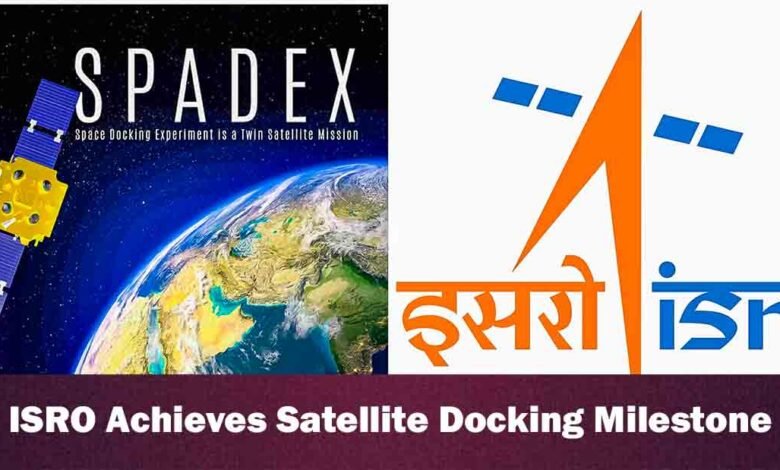
BENGALURU: In a groundbreaking step toward advanced space operations, the Indian Space Research Organization (ISRO) has successfully maneuvered two satellites within just three meters of each other as part of its Spadex mission. This significant achievement marks a crucial stage in ISRO’s pursuit of in-orbit docking capabilities. The organization announced on Sunday that the satellites, after reaching the minimum distance, were safely returned to their original positions.
The official statement on X (formerly Twitter) confirmed, “The attempt to bring both satellites to a distance of 15 meters and subsequently to 3 meters was successful. The spacecraft has been brought back to a safe distance.” The docking experiment, however, will only proceed after comprehensive analysis of the collected data.
Delayed but Determined Progress
The docking trials have faced multiple delays. Initially scheduled for January 7, 2024, and later postponed to January 9, the experiment finally began after an official announcement by ISRO on December 30, 2024. Despite these delays, the recent success reflects the organization’s meticulous planning and commitment to technological excellence.
The Spadex Satellites and Their Mission
Launched aboard the PSLV-C60 mission, the Spadex satellites—SDX 01 and SDX 02—each weigh 220 kg and were placed in a circular orbit. Alongside these satellites, the mission carried 24 additional payloads dedicated to various research and development objectives.
If Spadex achieves full success with docking, India will become the fourth country globally to demonstrate this capability, joining the ranks of elite space-faring nations. The implications of this success extend to future missions requiring satellite servicing, refueling, and other critical orbital operations.
Advancing India’s Space Ambitions
In-orbit docking is a complex and high-precision maneuver, vital for future endeavors like space station construction, satellite maintenance, and deep-space exploration. The successful completion of the Spadex mission would enhance ISRO’s technological capabilities and benefit a range of upcoming missions, ensuring India remains at the forefront of space innovation.




